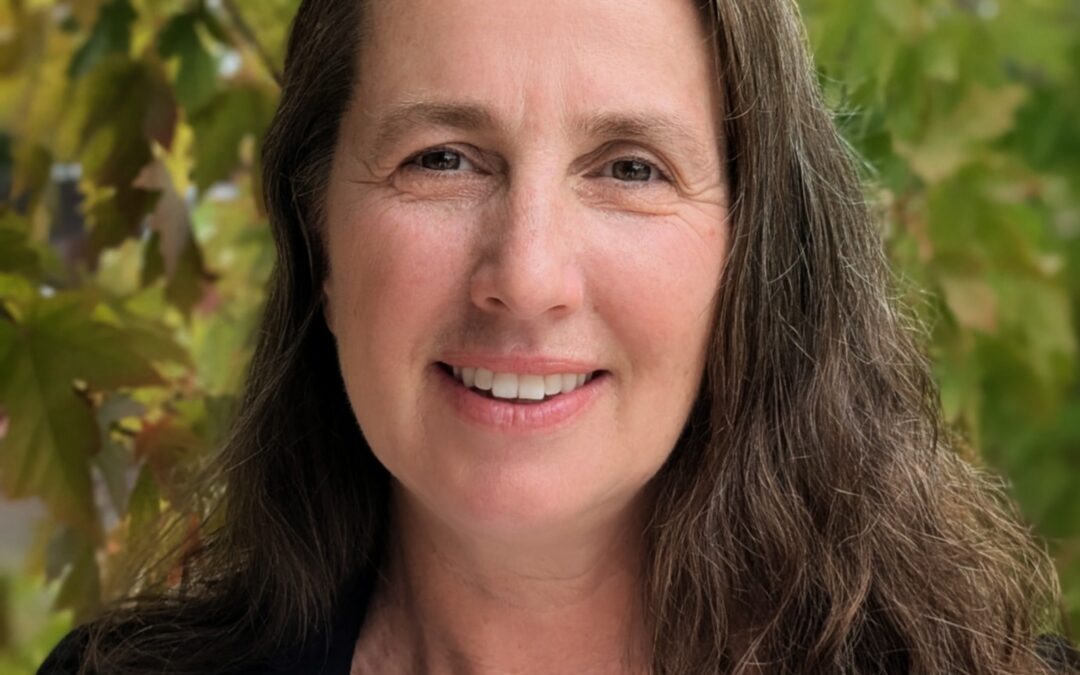We spoke with current Water Education Colorado board member and Environmental Scientist with the Colorado Department of Public Health and Environment, Ana Ruiz for the 2025 fall issue of Headwaters magazine focused on fish.
Please note: Although Ana Ruiz is part of CDPHE’s staff, the views expressed in this conversation are solely her own and do not represent those of CDPHE.
Your background spans research, water resources and water quality, and environmental equity. Can you share a bit about your career path and what first inspired you to pursue this kind of work?
For me, water is the thread that ties many of my interests together: protecting the environment, ensuring access to drinking water and sanitation for all, and figuring out how to balance the needs of different water users across the state well into the future. Because water is a finite resource that’s fundamental to life, it forces us to collaborate and see things from other people’s perspectives. And while finding this balance can sometimes be frustrating and slow-moving, I find it rewarding when different parties come together and find a solution that helps us all.
While my education and early interests focused on the relationship between water and the environment, it was working on a drinking water and sanitation project in Central America that really cemented my interest in water as a lifelong career. In addition to having researched water remediation from acid mine drainage pollution (the result of past mining activities), I also have a background in sustainability and how different disciplines like engineering, public policy, and urban planning, to name a few, can be integrated to further sustainability goals of communities and organizations.
Because Colorado’s climate is semi-arid, the administration of water in the state is highly regulated. Earlier in my career, I worked for a local municipality to manage and operate a diverse water rights portfolio. This experience was incredibly valuable and helped me build my understanding of the legal, physical, and human constraints of accessing water in Colorado.
In your current role at the Colorado Department of Public Health and Environment (CDPHE), you focus on connecting communities with funding opportunities offered by the state, specifically through the State Revolving Fund (SRF) program. Could you talk about how your work protects human health and aquatic organisms from emerging contaminants like PFAS?
The State Revolving Fund was created by Congress and provides low-interest loans for financing projects that protect and enhance water quality and drinking water infrastructure. As PFAS (Per- and polyfluoroalkyl substances) become more common in the environment, they can enter streams, drinking water supplies, and eventually fish and human bodies. In humans, one way to be exposed to PFAS is through consuming drinking water that contains this contaminant at levels above the recommended Maximum Contamination Levels set by the EPA. Some fish can absorb pollutants such as PFAS from their environment and in some cases, the fish tissue can contain levels of PFOS (a specific type of PFAS) which, if consumed by humans over a long period of time, could result in health effects.
In Colorado, the SRF program has funded the prevention of emerging contaminants from entering water supplies and the environment in a number of ways. This funding can be used for upgrading pretreatment processes and mixed media filtration for manganese removal, and for providing PFAS treatment of groundwater wells and surface water supplies. By removing emerging contaminants from the environment, we are protecting human health and other living forms.
One of the goals of the SRF program is to help disadvantaged communities get funding for their water and wastewater projects. Many of the projects the SRF program funds help wastewater facilities stay in compliance or return to compliance with the terms of their permits; this has a direct impact on the water quality of our lakes and streams and, as a result, on aquatic ecosystems.
What do you see as the biggest challenges facing water in Colorado today? And specifically, what are the biggest threats to fish habitats?
Climate change, invasive species, nutrient runoff, and groundwater depletion are challenges that directly or indirectly threaten fish habitat. As climate change gives way to aridification, freshwater availability decreases over time. One place where a slow but permanent shift can be seen is in a declining snowpack that eventually will return less water into streams. As average air temperatures rise and annual flows decline, the water temperature in streams increases, impacting some fish populations by decreasing the availability of dissolved oxygen in the water. This can result in metabolic changes that negatively affect fish survival. Invasive species are also a threat to already stressed ecosystems, as invasive species disrupt established food webs and survival strategies. They can also negatively impact water quality by outcompeting key native species that remove or break down pollutants. Nutrient runoff from agriculture, wastewater treatment plants, and urban areas causes eutrophication and frequently results in algal blooms. Algal blooms can rapidly decrease the concentration of dissolved oxygen for aquatic life and can lead to fish kills. The combination of excess nutrients and warm water temperature makes algal blooms more likely to occur, thus decreasing fish populations and increasing water pollution. Lastly, although groundwater and fish may not be visibly connected, significant fractions of streamflows can originate from groundwater. This is particularly important during dry years when groundwater acts as a supplemental source of flows to what might otherwise be a trickling stream, and where fish may not be able to survive. The natural rate of groundwater recharge is extremely slow, so protecting this resource is important for the water cycle as a whole.
What’s something you think people often don’t know or misunderstand about water in Colorado? And is there something surprising you think people should know about CDPHE or fish health in general?
When we think of Colorado, we immediately think of high mountains and snow. How can water be scarce here, right? But it is! While water may be plentiful in the form of snow or during the summer monsoons, most of Colorado is a semi-arid environment. Consequently, farmers, ranchers, and cities must manage water wisely. Probably my favorite misconception is around direct water reuse, specifically, wastewater reuse for human consumption. Most people probably wouldn’t think that wastewater can be treated to potable water standards, but the technology has been around for some time. I believe recycling wastewater for potable use will become more commonplace in our lifetimes as water supplies become more strained. Like with so many other water advances that benefited humans and the environment, this one will take time and trust-building.
What motivated you to join the Water Education Colorado board, and do you have anything you’d like to share about your experience on the board or with our work? Anything on your work on our Publications Committee and translating WEco content from English to Spanish?
WEco does an exceptional job at providing accurate, well-balanced, and non-partisan information to the public and elected officials. As such, it is trusted by the water community and beyond. Throughout my career, I have used WEco as a resource for continuing to learn and fact-check information, so serving on the board is a huge honor for me, as it allows me to give back and contribute to the mission of the organization. Being on the board is also a great way to collaborate with other professionals with very different backgrounds and life experiences than mine, which is really fun and instructive. Part of what we do as a board is to widen WEco’s reach across the state to ensure that the organization provides relevant information about new trends and emerging issues in water. Luckily for us – or not! – water literally touches every aspect of our environment, economy, health, and overall day-to-day. So supporting WECO in this capacity also means staying updated on new water science and policy, as well as the challenges of protecting water quality and quantity for people and the environment.
Recently, WEco has partnered with other organizations to translate Community Guides into Spanish. This shows WEco’s commitment to ensuring that water information reaches as many people as possible in our communities. We would love to partner with local organizations to make the guides accessible to more people, and I encourage readers to reach out to WEco’s team with ideas about where Community Guides in Spanish can be of benefit.


 Print
Print